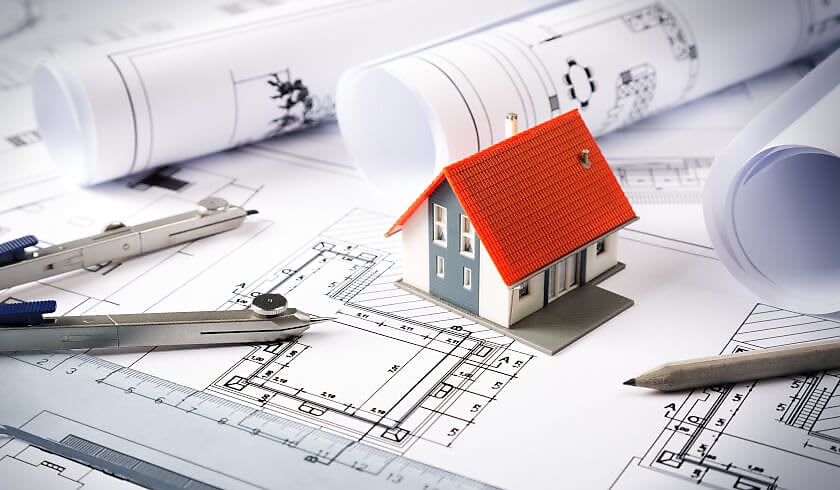9 tips for bringing a property development back from the brink
The property and construction industry is facing a rising trend of developments collapsing, but an industry expert says there are effective strategies to turn around troubled projects.

James Alexander-Hatziplis, the co-founder and chief executive of architectural firm Place Studio AU, said the number of property and construction industry failures may set a record this financial year.
Australian Securities and Investments Commission’s (ASIC) latest data shows the number of liquidations, receiverships and administrations in the sector has risen to 1,230 for the year to mid-March.
Australia is in the grips of a construction industry crisis, which reportedly started at the tail end of 2021, when major Queensland construction firms Privium and BA both went into liquidation during December.
The sector’s woes continued in 2022, as the start of the year saw Victorian firm Hotondo Homes Horsham collapse with liabilities of over $1 million.
A month later, building giant Probuild was placed into voluntary administration, leaving $250 million in outstanding debts in the wake of its fall.
The grim list continued to grow as the year progressed, as a number of other high-profile companies also collapsed, including Inside Out Construction, Dyldam Developments, Home Innovation Builders, ABG Group, New Sensation Homes, Next, Pivotal Homes, Pindan, ABD Group, Waterford Homes and Solido Builders — with at least 20 construction companies in the country reportedly going bust in 2022.
In 2023, Porter Davis Homes Group (PDH Group) was the latest firm to join the ranks after going into liquidation at the end of March and leaving more than 2,500 house contracts across Victoria in the lurch.
While news broke about Porter Davis Homes’ liquidation on Friday, 31 March, another construction company revealed it was on the brink.
The Lloyd Group was placed into voluntary administration on the same day, with work on all current projects halted.
9 tips to turn around troubled developments
Despite the concerning trend of building firms going south and others now hanging on by a thread, Mr Alexander-Hatziplis said, “It doesn’t have to continue”, adding that “[not] all of those that are considering shutting shop have to fold; not all their projects have to be shut down”.
He said there are several techniques that can be considered to help turnaround a troubled development.
1. Thorough initial consideration and planning
One effective strategy recommended by the expert is to prioritise thorough initial consideration and planning before diving into the documentation and construction phase, as this not only prevents wastage of capital but also enhances the final outcome of the project.
“Deep partnerships with builder-developers can [embed] value that generally results in lower costs, higher-quality finishes and market-preferred unit layouts,” he explained.
“Addressing these elements early in the development process can sometimes help turnaround a troubled development,” he added.
2. Design and develop for yield
According to the expert, design and yield are “very much interdependent and even more crucial in today’s market turmoil” and advised owners and investors to prioritise designing and developing for yield or increased income in every new property development and construction project.
“When developers and investors are looking at a property, they should ask more than just what the expected yield will be. They need to know if it contains certain elements that can increase the yield in comparison to other similar properties.
“This in turn can add greater value and an improved bottom line,” Mr Alexander-Hatziplis explained.
3. Assess yield-enhancing elements
He recommended developers and investors need to assess what attributes the project and the site have that will add additional yield.
“How can those attributes protect income if another property is developed next door or if one fails across the road?”
“These yield-enhancing elements include simplified construction methodology, reduced basement excavation and locating apartments in the most considered locations,” he explained.
4. Incorporate thoughtful design elements
Enhancing yield can also be achieved through thoughtful design elements, according to the expert.
This includes utilising natural light to enhance lighting, creating seamless transitions between living spaces, and considering important factors such as kitchen design, amenities, and storage options.
5. Sustainability matters
Incorporating sustainable features like solar panels and battery storage not only improves the development’s sustainability but also helps reduce costs.
6. Create spaces that bring people together
The expert emphasised that creating spaces that encourage social interaction and collaboration, such as dedicated areas for living or working, can have a positive impact on the yield and success of a development project.
“Spaces that bring people together, to live, to socialise; or in office spaces to network, to create also contribute favourably to higher yields. This might be a dedicated space, such as a café,” the expert stated.
7. Consider ease of property maintenance
The expert suggests that considering ease of property maintenance is crucial to increasing yield in property development.
“Another key design aspect for increasing yield is ease of maintaining the property — is it easy or hard to maintain? This is a key feature of design and should be addressed from the initial stages of planning,” the expert stated.
8. Focus on curb appeal
“Curb appeal is another important design element. Is the building attractive from the street, the entrance for visitors as well as employees working there? Or does the next one down the road appear better?” Mr Alexander-Hatziplis probed.
9. Collaboration for quality outcomes
Mr Alexander-Hatziplis noted the recent changes to the design and construction industry spearheaded by the NSW building commissioner David Chandler is helping differentiate those developers and designers who are concerned about providing quality outcomes from those looking to make a quick buck.
“At the end of the day, the person purchasing the property needs designers and builders who are accountable, and who want to deliver high-quality projects that will last the test of time,” he concluded.
